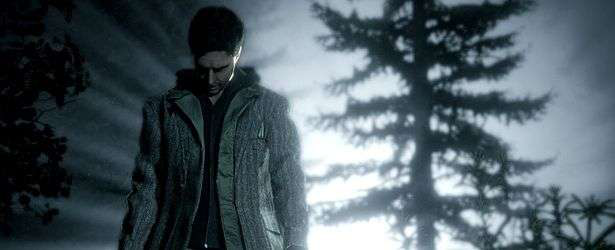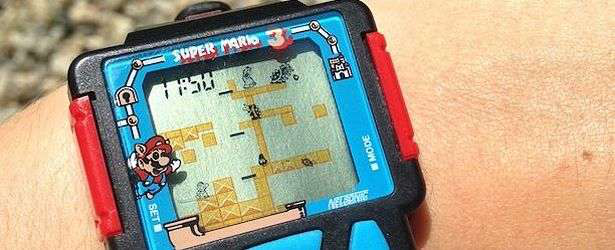Mario & Luigi: Dream Team Bros – Review
by Edward
|
 After years of being one of the world’s most famous underdogs, Nintendo decided that 2013 was time to pay due to one of the best brothers around with the Year of Luigi celebrations, honouring his thirtieth birthday with a slew of new titles that would help catapult the oft-overshadowed plumber into the limelight. With New Super Luigi U serving as an expansion of last year’s Wii Launch title and the only other respites being his presence in upcoming sports spin-offs and the fantastic Luigi’s Mansion 2, I found myself most looking forward to his starring role in Mario & Luigi: Dream Team Bros.
After years of being one of the world’s most famous underdogs, Nintendo decided that 2013 was time to pay due to one of the best brothers around with the Year of Luigi celebrations, honouring his thirtieth birthday with a slew of new titles that would help catapult the oft-overshadowed plumber into the limelight. With New Super Luigi U serving as an expansion of last year’s Wii Launch title and the only other respites being his presence in upcoming sports spin-offs and the fantastic Luigi’s Mansion 2, I found myself most looking forward to his starring role in Mario & Luigi: Dream Team Bros.
By far my favourite Mario spin-off series after the iconic Mario Karts, the RPG franchise sees the duo take part in some of their most inventive adventures, with earlier instalments seeing them travelling through time and teaming up with younger versions of themselves sans paradox, as well as being inadvertently swallowed by Bowser and forced to control him from the inside. While the Princess is just as kidnapped as the last few occasions, now the brothers Mario will have to step into another realm, and into their dreams.
 After being whisked away to the elusive Pi’illo Island by the mysterious Dr Snoozemore, it soon transpires that it’s now no more than a tourist resort, as the natives have seemingly disappeared and the place is overrun with people eager to take in the sights and learn more about the history of the vanished civilisation. While it seems like both brothers are eager to escort Peach to this strange new land, it turns out that Luigi would much rather be grabbing another forty winks or so, and can’t resist sneaking in a quick nap before they’ve even landed.
After being whisked away to the elusive Pi’illo Island by the mysterious Dr Snoozemore, it soon transpires that it’s now no more than a tourist resort, as the natives have seemingly disappeared and the place is overrun with people eager to take in the sights and learn more about the history of the vanished civilisation. While it seems like both brothers are eager to escort Peach to this strange new land, it turns out that Luigi would much rather be grabbing another forty winks or so, and can’t resist sneaking in a quick nap before they’ve even landed.
As they arrive at Pi’illo Castle, they soon discover that Snoozemore is nowhere to be found and, after an awkward mishap, neither is Princess Peach. After hunting down and rescuing her, the brothers uncover a strange artefact, which Luigi promptly uses to take another nap on, accidentally opening up a portal into the dream world tied to the Island, trapping Peach inside and getting her kidnapped again.
In a move typical for the series, Bowser isn’t the one responsible for her kidnapping – much to his chagrin – and the villainous lout responsible for it this time around is the fiendish Bat King Antasma, whose attempts to rule the island saw its precious Dark Stone destroyed and the Pi’illos locked into an eternal slumber as a result. Unbeknownst to the plumbers is that the strange treasure Luigi is sleeping on is actually Prince Dreambert – the rightful ruler of the Pi’illos – and after destroying nightmare chunks scattered throughout the dream world they soon free him and enlist his help – along with the returning Starlow – to defeat Antasma, rescue Peach and restore the land to its former glory.
 |
 |
 |
 |
 |
 |
From here, the action is split into both the real and dream worlds, with Mario and Luigi exploring Pi’illo in the former and attempting to save its denizens in the latter. While Mario can travel between the two realms with ease, Luigi is unable to physically enter the dream world himself, being that he has to sleep on the Pi’illos in order create the portals for Mario to enter and rouse the island’s residents from their slumber. Instead, Mario is accompanied throughout the strange reality by Dreamy Luigi – a more slender, taller and sleeker moustachioed version of the green-clad brother – whose ability to manipulate the world around him via Luiginary works helps his older brother to traverse this new landscape.
 By channelling these dream powers, the player can fling Mario across the room, change the flow of gravity, and even spawn hundreds of Luigis ready to do your bidding and, thanks to the fact that they help form the main basis of progression throughout the realm, they feel more natural than the set-pieces in Bowser’s Inside Story, if a little less inventive. The greater achievement comes from the fact that the Luiginary works are repeatedly iterated on, and even as you approach the last quarter of the story you’ll still have new abilities bestowed upon you to keep the action fresh, even though half of the adventure takes place inside the dream world.
By channelling these dream powers, the player can fling Mario across the room, change the flow of gravity, and even spawn hundreds of Luigis ready to do your bidding and, thanks to the fact that they help form the main basis of progression throughout the realm, they feel more natural than the set-pieces in Bowser’s Inside Story, if a little less inventive. The greater achievement comes from the fact that the Luiginary works are repeatedly iterated on, and even as you approach the last quarter of the story you’ll still have new abilities bestowed upon you to keep the action fresh, even though half of the adventure takes place inside the dream world.
When Luigi’s not catching some shut-eye, he’ll be teaming up with Mario in the over-world, which will be more than familiar to fans of the series, as moving through the environment and battling hasn’t changed much in this regard. In fact, the biggest changes come from the brothers’ special abilities and attacks that they’ll learn as they progress through the story, either by being taught them by others or collecting the scattered attack pieces across the land.
 Hammering Mario underground or shrinking him down to size with a club to the head is still present, but now the brothers can form a makeshift drill to burrow and a bouncing ball to reach heights unsurpassable within a single bound, and mastering these will be key to seeing everything by the time the credits roll. However, some of the moves are consigned to the back of the queue before long, particularly Mario’s burrowing, which is almost solely used to retrieve beans from underground, a collectathon fans of Superstar Saga will be well acquainted with. Unfortunately, rather than gathering them as an incentive to unlock more powerful items and the occasional cameo, once you’ve uncovered a bean you can only use it to slowly boost the skill points of one of the two brothers.
Hammering Mario underground or shrinking him down to size with a club to the head is still present, but now the brothers can form a makeshift drill to burrow and a bouncing ball to reach heights unsurpassable within a single bound, and mastering these will be key to seeing everything by the time the credits roll. However, some of the moves are consigned to the back of the queue before long, particularly Mario’s burrowing, which is almost solely used to retrieve beans from underground, a collectathon fans of Superstar Saga will be well acquainted with. Unfortunately, rather than gathering them as an incentive to unlock more powerful items and the occasional cameo, once you’ve uncovered a bean you can only use it to slowly boost the skill points of one of the two brothers.
As in every previous instalment, the plumbers’ stats increase uniquely from each other, so while Luigi carries more health points and has a greater ‘Stache – netting him more frequent damage-boosting ‘Lucky’ attacks – he’s much slower than Mario, who has a more powerful attack but much lower defence, making him something of a glass cannon. Every level gained also allows you to further upgrade a particular stat through a roulette that gives diminishing returns the more you use it on a certain boost, which can be problematic as your ‘Stache points no longer level up when you do, making using this roulette a necessity if you ever want to see the paltry number improve. By the end of the journey, both brothers will have wildly different stats, and it’s learning these differences and mastering them within your play-style that provides some of the more subtle nuances of the combat as you consider who needs an item more, or whether to attack a foe in the hopes of a lucky attack wiping them out.
Battling in the over-world is much as it was before; Mario and Luigi both have Jump, Hammer and Item commands, as well as a set of Bros. moves and the ability to flee if combat gets too much for you. Of these, Fleeing and Bros. moves have seen some tweaks, with the former no longer penalising you in any way for leaving the battle, unlike previous entries where attempting to leg it would see you lose coins and, if you were slow to mash the buttons, even lose the chance to escape entirely.
 |
 |
 |
 |
 |
 |
While having no incentive not to run away from battles that are proving too much may see some pulling faces, the return of individual Bros. attacks will do plenty to negate it. Earned by collecting attack pieces throughout certain areas, these will bestow Mario and Luigi with a more complicated move that can serve to pull off big damage if performed correctly. Some of these will also make use of the 3DS’ alternative functionalities, and so certain moves will take full advantage of the three-dimensional effects or concentrate on using the gyroscopes for tilting to provide a greater variety to their previous move-set Attacks that use the touch-screen specifically don’t appear in the over-world, and instead it’s used to provide a short tutorial for selected Bros. moves and also to show the status of your badges, which have also been slightly tweaked since their last outing.
 As in the past, pulling off ‘Excellent’ attacks by timing your moves just so will build up a badge meter but, rather than the effect needing to be activated once the gauge is full, you can instead store the power twice and unleash them via the touch-screen whenever you feel like, athough if you have both slots full and the meter is about to fill up again, it will replace whatever’s been stored in the second position. Mario and Luigi can equip a number of different badges which, when combined, pull off a variety of effects, from healing players slightly to making every activation a risk or simply increasing the rewards for defeating enemies.
As in the past, pulling off ‘Excellent’ attacks by timing your moves just so will build up a badge meter but, rather than the effect needing to be activated once the gauge is full, you can instead store the power twice and unleash them via the touch-screen whenever you feel like, athough if you have both slots full and the meter is about to fill up again, it will replace whatever’s been stored in the second position. Mario and Luigi can equip a number of different badges which, when combined, pull off a variety of effects, from healing players slightly to making every activation a risk or simply increasing the rewards for defeating enemies.
That being said, I actually found that the best combination – full damage immunity for both brothers for six attacks each – is available as soon as you can buy the badges yourself rather than being given them, and I never found any other combination anywhere near as effective. Unlike badges, equippable gear hasn’t seen a major overhaul, with the biggest difference being that some items have power gauges wholly dependent on how much money you have, whether it’s your birthday or not or how many challenge points you’ve accrued.
 Challenge points are perhaps the second biggest revolution to happen to the combat for Dream Team Bros., with players being rewarded for either reaching streaks of ten ‘Excellent’ strikes in a row, avoiding ten attacks in a row or making it through an entire battle with a standard foe without being hit. As a result, combat whenever you approach a new area can become far more intense, as the focus soon becomes about reaching those goals by any means you can if you want the Challenge gear to be as formidable as possible. By the final boss any Challenge-related equipment was more powerful than anything else in my inventory save for Gold gear – powered by how much cash you have in your reserves – so it’s more than worth attempting to clear all of the expert challenges. Admittedly, trying to reach that point often involved me swearing in frustration and resetting constantly to complete any of the dodge challenges, which became supremely fiendish by the final areas.
Challenge points are perhaps the second biggest revolution to happen to the combat for Dream Team Bros., with players being rewarded for either reaching streaks of ten ‘Excellent’ strikes in a row, avoiding ten attacks in a row or making it through an entire battle with a standard foe without being hit. As a result, combat whenever you approach a new area can become far more intense, as the focus soon becomes about reaching those goals by any means you can if you want the Challenge gear to be as formidable as possible. By the final boss any Challenge-related equipment was more powerful than anything else in my inventory save for Gold gear – powered by how much cash you have in your reserves – so it’s more than worth attempting to clear all of the expert challenges. Admittedly, trying to reach that point often involved me swearing in frustration and resetting constantly to complete any of the dodge challenges, which became supremely fiendish by the final areas.
The biggest revolution comes from how battles are performed in the dream world; with Luigi not physically there to accompany Mario, it’s up to the red-clad man to battle often hordes of enemies at once. Instead of just jumping in place or holding the hammer for the right moment to counter-attack (you can hold the hammer indefinitely now, rather than previous titles where tensing too long would cause it to be dropped in exhaustion), now Mario can run up and down to avoid attacks that spread across the area, and he can change the direction he swings with the hammer to avoid charges from alternative angles. When on the offensive Mario will be aided by the Dreamy Luigis, most notably during the epic Luiginary attacks, which range from using them to form a giant wrecking ball of destruction, a massive hammer dealing an insane amount of damage in a single swing, or even a tornado of destruction, provided you can pull them off effectively. Admittedly, I often found that the most effective moves were the hammer and the ball, as the latter could easily wipe out the numerous enemies you’d face off in a single swipe, and the former could make short work of some of the bosses.
 |
 |
 |
 |
 |
 |
Some battles will harken back to the screen-filling exploits in Bowser’s Inside Story, forcing players to use the touch screen and hold the 3DS sideways in order to fight. While impressive in scope, the issue with these is that there’s a much smaller move-set to play with for both you and your opponent, which can slow the pace to a crawl, even if there’s an absence of mistakes on your part. They’re a great idea and they expand on Inside Story’s groundwork in an innovative way, but by the time they’re over you’re breathing a sigh of relief more than you are celebrating your victory.
Pacing isn’t perfect in Dream Team Bros., although it is impressively consistent for an adventure that will take you around forty hours to finish, and even more if you insist on rescuing every Pi’illo, uncovering every bean and completing all of the challenges. There’s even an optional mini-game with Kylie Koopa tasking you with decrypting photos by re-assembling the jigsaw pieces that you hunt down and easily invest an hour or so into. The action is spread evenly between the dream world and the island of Pi’illo, and you’ll have more than plenty of time to soak in the atmosphere, enjoy the music and lose yourself a little. At one point, I found myself so engrossed in the battles that I accidentally got on the wrong train and ended up either cursed or blessed by a racist, homophobic man claiming to be an ‘Apistle’ of the Angel Gabriel, and now might die or end up in heaven as a result. Thanks, Nintendo.
 On the other hand, there were moments when I found myself switching off, and the most frequent occurrences were when puzzles were introduced, as the action would be wrestled away from you while the dialogue would often explicitly spell out exactly how to clear the obstacle at hand. It may have removed the guesswork, but it felt like unnecessary mollycoddling considering I can’t remember the previous Mario and Luigis telling you how to finish the puzzle before you’ve even attempted it, as if they’re ashamed of their inclusion. This would be forgiveable, but there’s no option to turn them off, and that also goes for all of the tutorials after the opening sequence.
On the other hand, there were moments when I found myself switching off, and the most frequent occurrences were when puzzles were introduced, as the action would be wrestled away from you while the dialogue would often explicitly spell out exactly how to clear the obstacle at hand. It may have removed the guesswork, but it felt like unnecessary mollycoddling considering I can’t remember the previous Mario and Luigis telling you how to finish the puzzle before you’ve even attempted it, as if they’re ashamed of their inclusion. This would be forgiveable, but there’s no option to turn them off, and that also goes for all of the tutorials after the opening sequence.
An offset of introducing new abilities gradually is that they all come with a several-minute-long sequence where you’re instructed on how to perform them, and it can feel slightly jarring when you’re five hours from the end and still having puzzles spelled out for you or moments when Starlow or Dreambert are teaching you how to progress. It’s by no means a deal-breaker – especially as the tutorials are necessary, even though I’d have liked the option to skip them all – but it’s a baffling design choice to detract from the puzzles by spelling out their solutions before you’ve even had a chance to try them yourself.
 Dream Team Bros. may have fantastic combat, constantly iterative gameplay and a graphical aesthetic that remains reminiscent of the past while allowing for 3D shenanigans but, oddly, my biggest criticism comes from the fact that it’s not as well-written as previous Mario & Luigi titles. Part of my love of the series comes down to the humour and the way it plays with established tropes of the Mario franchise, with Bowser first being used as the comic relief before making the jump to a playable character, and Luigi’s relative lack of fame often backfiring on him, with one particularly memorable moment coming from a hypnotist believing he wasn’t Mario’s brother, but an overly obsessed fan.
Dream Team Bros. may have fantastic combat, constantly iterative gameplay and a graphical aesthetic that remains reminiscent of the past while allowing for 3D shenanigans but, oddly, my biggest criticism comes from the fact that it’s not as well-written as previous Mario & Luigi titles. Part of my love of the series comes down to the humour and the way it plays with established tropes of the Mario franchise, with Bowser first being used as the comic relief before making the jump to a playable character, and Luigi’s relative lack of fame often backfiring on him, with one particularly memorable moment coming from a hypnotist believing he wasn’t Mario’s brother, but an overly obsessed fan.
This time around, most of the story and action is played almost disappointingly straight; there are some occasionally-quirky bits and a few lines where you’ll eek out a smile, but there’s nothing on par with the hilarity of those before it. In fact, I found that quite a bit of the humour felt like an extension of Bowser’s Inside Story, especially thanks to the return of the heavily accented block people. It felt doubly odd because if you loved that instalment in the series, you’ll feel let down by the fact that Bowser isn’t handled at all interestingly, and just simply plays the typical villain role instead.
In many ways, Dream Team Bros. is quite difficult to judge; the combat is the best it’s been since Superstar Saga, and it’s full of great and innovative ideas that build on the frameworks provided by its predecessors to keep the action fresh. The variation in battles and locations, as well as the constant addition of new skills means that it never hits a rut, and it’s thoroughly entertaining to its core. On the other hand, some of the battles feel stretched out, it tends to patronise the player when it comes to puzzles and the final area, and bosses have such a grandiose difficulty spike that I genuinely found myself questioning if I’d accidentally skipped a previous stage. It’s less well-written and funny than its predecessors, but then makes up for it by providing far more content, and I found myself running out of steam way before the story did, as I thought it would end up being closer to the twenty or so hour length of previous titles, not the forty hour behemoth it becomes.
 |
 |
 |
 |
 |
 |
Mario & Luigi: Dream Team Bros. doesn’t leave without a recommendation; those who haven’t tried out the series before will find this a brilliant entry point, and those who have will find it often surpasses its predecessors in terms of gameplay, but falls down when it comes to the humour and writing that the franchise is known for. There’s an incredibly meaty story mode that constantly keeps on giving – even when you think it’s preparing to wind down – and it’s more than worth the asking price to boot. Try as you might, you simply can’t go wrong with Dream Team Bros., and it’s an ideal way to while away the summer until the manic holiday release schedule.
Pros- Constantly iterative and varied gameplay.
- Great implementation of the 3DS' features without feeling shoehorned.
- More than forty hours of content.
- A great art-style that helps make the transition into 3D as painless as possible.
- Combat is as engrossing as ever.
- Some great innovations to the series' core gameplay.
- Lacks the comic spark of its predecessors.
- Plot played disappointingly straight.
- Can conceivably rely on the same tactics from the mid-way point.
- An overly-harsh difficulty spike in the final stages.
While it definitely had potential to be the best in the series, Dream Team Bros misses out on that honour due to a slightly weak story and a lack of humour, despite having some of the greatest ideas of the lot. With an insanely-long play time and so much to do, you won't find yourself vacating Pi'illo Island anytime soon, but although it sometimes surpasses them, it doesn't always reach the heights of Superstar Saga or Bowser's Inside Story. Regardless of whether its your first time with Mario & Luigi or you've played the previous ones to death, it's a more than worthy addition to the franchise and one that will be slotted inside your 3DS for a long while to come.
Last five articles by Edward
- Best of 2015: Journey's End: A New Beginning
- Journey's End: A New Beginning
- You Can't Choose Your Happy Ending
- Okay, Let's Fix Comedy In Games - The V-Effekt
- Time Keeps On Smashing Away























There are no comments, yet.
Why don’t you be the first? Come on, you know you want to!